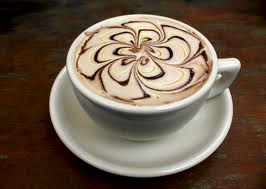Posted: 4 April 2014.

“It’s a movie that speaks of Hollywood’s unacknowledged fascination with the exotic, the mad, the unreal” – Peter Bradshaw.
The Wizard of Oz (1939) is regarded universally as one of the most endearing and best-loved movie classics of all time. Based on the fantasy adventure by L. Frank Baum, this musical adaptation was a major hit for MGM and has become the most beloved family film of all time.
Nuts…
This movie critic seemingly stands alone in finding it the most ludicrous overblown tosh, quite aware that the Blogosphere’s collective ire will be well and truly shaken, and brought down upon him. So what is it about this “beloved classic” that disagrees with me so?
Quite frankly, the whole caboodle just comes across as too treacly for me, always has – so sweet it makes me feel nauseous. Judy Garland, and her three cohorts, are quite annoying, the wicked witch is too much of a caricature; the flying monkeys (give me a break!) and the munchkins will forever live in infamy – “drunken midgets swinging from the rafters” stated one source. And goodness, one just cannot tolerate those songs!
All of you may scoff at me, but it should be said that my father shared my disapproval, and actually would have had much harsher words to say against this truly abominable spectacle.

“My main gripes: the second hour is rather draggy… You can’t help but notice… the visible wires and painted backdrops” – Michael J. Legeros.
On the last day before Christmas hols at junior school, the teachers thought it would be nice to treat the kids to a lovely movie. Star Wars? Would have been too obvious. Raiders? That would have been too cool!
Nope, someone actually considered subjecting us to The Wizard. Suddenly, my worst fears were realised: stuck in the middle of a packed hall, made to watch this celluloid hell-package. Having had the easy choice of switching off the TV when it first lurched into my life, there seemed to be no chance of escape this time! Those accursed monochrome moments in Kansas compelled me to take drastic action.
With a great disturbance swelling within me, this poor bunny turned to the boy next to him, and struck up a banal conversation. The plan worked – an eagle-eyed teacher spotted my incessant yakking and called me out. As if zapped by an electric charge in my seat, this lil bunny sprang to his feet and fritted away into the nearest classroom. The teachers obviously believed they were dispensing punishment, no doubt pitying my “foolish” lack of judgment; on the contrary, heh heh, Bradscribe cites this happy release, and tremendous relief, as one of his finest scholastic achievements.

“I’ll get you, my pretty, and your little dog too!” – The Wicked Witch of the West.
So, has the pain subsided as the years have flown by? Heck no, this film irritated me at the tender age of seven; now, older enough to understand the horrors of this world… yep, it still disturbs me. After years of stress-relief and meditation, nothing can prepare me to sit through this. What made MGM think that making this tosh would be a good idea, even in 1939?
Let me get this straight: a teenage girl kills the first person she meets, then tags along with three strangers to kill again… and you mean to tell me this is the perfect kids movie?!
In support of my attestation that the whole spectacle was unsightly, research shows that The Scarecrow (Ray Bolger), Cowardly Lion (Bert Lahr) and Tin Man (Jack Haley) were deemed too frightening and, during filming, had to take their lunch to their dressing rooms as their costumes scared the living daylights out of the other canteen users.
“We’re off to see the Wizard, the wonderful Wizard of Oz,” indeed. Fine, you can go and watch by all means but my instincts tell me to forever give it as wide a berth as poss.
Honestly, had this Post been published on Tuesday, none of you would have taken it seriously…

Normal blogging service will be resumed shortly.




























